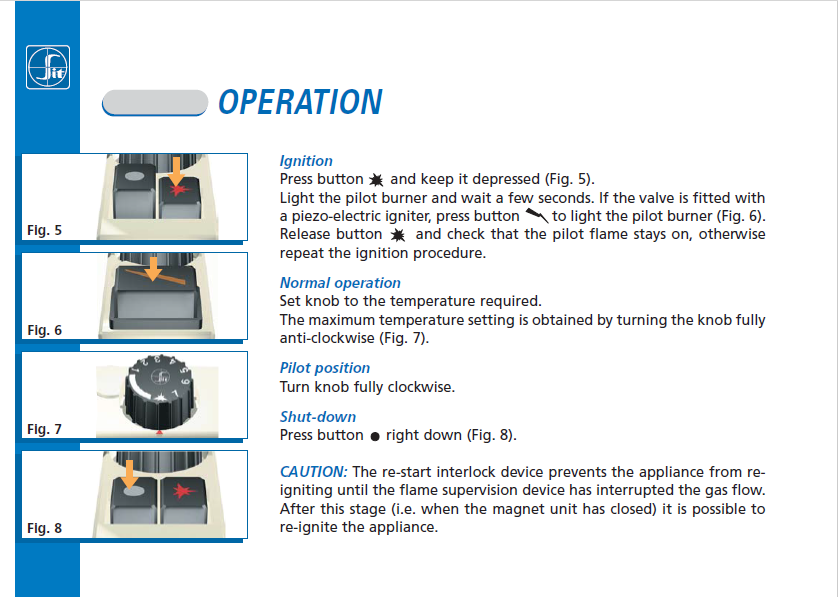The following are the procedures of operating the SIT 710 valve of the gas fryer.

Download menu of SIT 710
Note: Customers using solid fats must avoid turning the knob fully counterclockwise. Use the setting marked “1” in Fig. 7 until the solid fat has fully melted into liquid form. Failure to do so may cause the high limit to trip. If tripped, wait at least 3 minutes, then gently press the reset button before restarting the operation.
Restart Interlock Feature in SIT Gas Valves
After-sales service technicians or users may notice that after turning off the gas valve on a fryer or similar cooking equipment, it cannot be restarted immediately. Typically, one must wait about 10 seconds before hearing a click sound, which then allows the valve to be turned on again.
This 10-second delay is attributed to the restart interlock feature integrated into the gas valve’s safety system. This feature incorporates a time delay mechanism designed to ensure that the valve has fully closed and that any residual gas in the system has been safely purged before a restart is allowed.
Process During the Delay:
- Valve Closure and Safety Check: Upon turning off the gas valve, a few seconds are needed for the valve to completely shut. During this time, the system performs internal checks to verify that no leaks or unsafe conditions are present.
- Internal System Reset: The restart interlock imposes a delay to ensure the system stabilizes before restarting. This time delay helps prevent rapid cycling of the valve, which could otherwise cause unsafe operation or damage to the equipment.
- Click Sound: The click signifies the activation of the mechanical or solenoid component of the valve, indicating that it is ready for normal operation again. This sound confirms that it is now safe to restore gas flow and turn the valve back on.
This delay is a crucial safety feature, ensuring the proper functioning of the gas valve and preventing potential hazards such as gas leaks or unintentional ignition.
